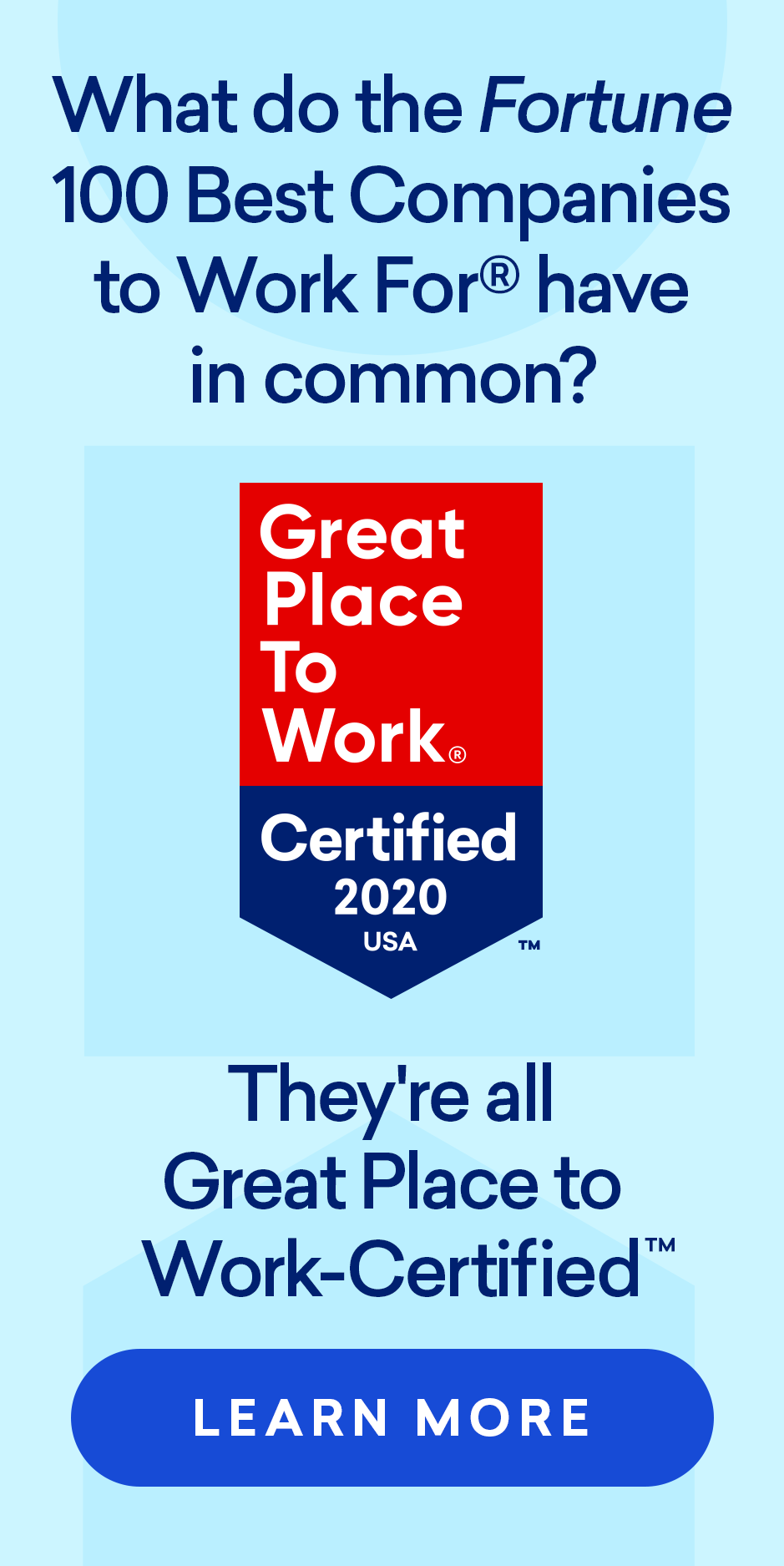Three Trust-Building Tips for Time-Crunched Managers
All great workplaces are characterized by strong trust-based relationships between employees and their managers. However, relationship building takes time, and many managers see time as an obstacle to building a workplace that is truly great.
The truth is, the difference between a manager who builds trust and one who doesn’t is not necessarily the quantity of interactions they have with employees—it’s the quality of those same interactions. If you believe you do not have the time that’s needed to foster a great workplace, take a second look at the practices and behaviors that you already engage in. Chances are, much of what is currently on your agenda as a manager can be modified for a greater trust-building impact.
Here are three ways you can improve the quality of your workplace relationships without investing a significant amount of additional time:
- Leverage Systems You Already Have in Place
Many powerful workplace changes can be implemented simply by infusing existing systems (such as meetings) and behaviors (such as eating lunch) with habits that will deepen your relationship with employees. Here are a few you can try now:- Increase Approachability: Dedicate one day a week to eating lunch with someone in your work group—or even your full team—so you get to know each other as people.
- Enhance Collaboration: Reserve the first 10 minutes of every staff meeting to have an open discussion about a specific topic, client challenge or process improvement.
- Encourage Positivity: Thank employees for good work in meetings and as you see them doing something well.
- Inspire a Sense of Meaning: Choose words wisely when referring to work environments, job titles, or even in general communications. For example, Marriott employees who work behind the scenes are said to work in the “heart of the house,” not the “back of the house.”
- Leverage Your Strengths
 The skills you use to lead are the same ones you can use to build trust. In fact, leaders who adopt a hodgepodge of best practices (instead of using their own strengths to impact their environment) won’t build trust among employees, because people recognize and reject inauthenticity.
The skills you use to lead are the same ones you can use to build trust. In fact, leaders who adopt a hodgepodge of best practices (instead of using their own strengths to impact their environment) won’t build trust among employees, because people recognize and reject inauthenticity.
To build trust using your own strengths, start small and set achievable goals. For example, if you are not a great public speaker, but prefer to communicate in writing, try sharing your thoughts and insights with employees through a regular blog or newsletter. If you are a task-driven leader, adopt the mindset that the task isn’t complete until accomplishments are celebrated.
- Adopt a Trust-Building Lens
Every interaction with employees is an opportunity to build or break trust. Trust is built over time, through many actions—both large and small (and conversely, can be broken in an instant!). By adopting this lens as a filter to your daily interactions, you can equip yourself to engage with employees in a way that will bolster your relationship with them. From thoughtfully communicating the details of a difficult organizational issue to simply saying “hello” in the hallway, making the choice to build trust at every juncture possible will lead to greatness in the long term.
Download the No Excuses! Whitepaper to learn more about how any manager can overcome the most common challenges to building a great workplace.
Jennifer Robin, Ph.D., is a Research Fellow, former Senior Consultant with Great Place to Work® Institute, and co-author of No Excuses: How You Can Turn Any Workplace Into a Great One and The Great Workplace: How to Build It, How to Keep It, and Why It Matters.














